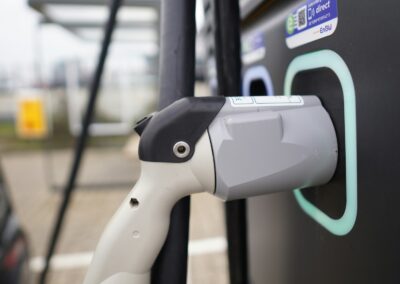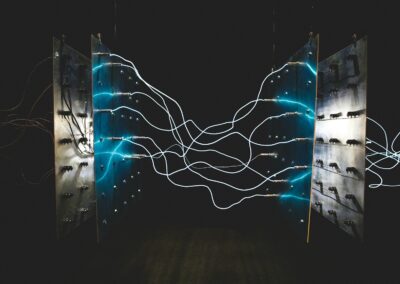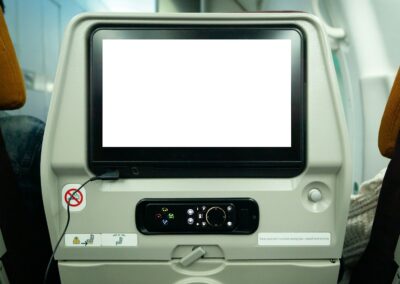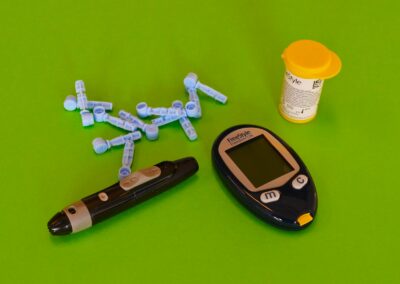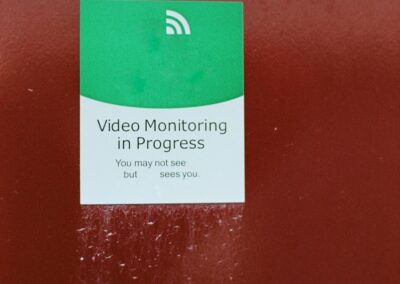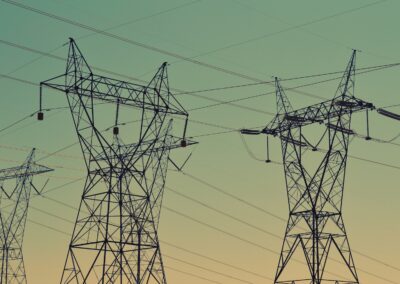Harnessing the Power of Digital Twins for Smarter Energy Management
Introduction to Digital Twins in Smart Grids
The application of digital twins in smart grid projects has fundamentally transformed the landscape of energy distribution and consumption. Digital twins are virtual replicas of physical systems that enable real-time monitoring, simulation, and optimization. By integrating digital twins into smart grids, utilities and energy companies can achieve unprecedented levels of efficiency and reliability, ensuring optimal performance and seamless energy management.
In progressive regions like Saudi Arabia and the UAE, where cities such as Riyadh and Dubai are leading the charge in smart city initiatives, the adoption of digital twins is pivotal. These regions are heavily investing in advanced energy solutions to meet growing demands sustainably. The integration of digital twin technology in smart grids is critical for optimizing energy distribution, reducing wastage, and enhancing the overall stability of the grid.
For business executives, mid-level managers, and entrepreneurs in the energy sector, understanding the transformative potential of digital twins is essential. This technology not only enhances operational efficiency but also provides a competitive edge by enabling proactive maintenance, real-time performance monitoring, and predictive analytics. Embracing digital twins in smart grid projects ensures that companies can meet the increasing demand for reliable and sustainable energy solutions in the region.
Real-Time Monitoring with Digital Twins
The implementation of digital twins in smart grid projects significantly enhances real-time monitoring capabilities. Traditional methods of monitoring energy systems often rely on periodic checks and reactive maintenance. Digital twins, however, provide continuous, real-time monitoring of energy distribution and consumption, allowing for proactive and predictive maintenance. This continuous monitoring ensures that any potential issues are identified and addressed before they impact performance.
In smart cities like Riyadh and Dubai, where energy efficiency and sustainability are top priorities, digital twins offer a powerful tool for optimizing energy systems. By creating a virtual replica of the grid, digital twins enable operators to simulate various scenarios and analyze the impact of different operating conditions. This capability allows for the fine-tuning of system parameters to achieve optimal performance under all conditions.
Moreover, digital twins facilitate better integration of renewable energy sources into the grid. By accurately modeling the behavior of energy systems, digital twins help in predicting and managing the variability of renewable energy sources such as solar and wind. This predictive capability ensures a more stable and reliable energy supply, even as the share of renewables in the energy mix increases. For regions like Saudi Arabia and the UAE, which are investing heavily in renewable energy, digital twins are indispensable for ensuring the reliability and efficiency of smart grids.
Optimization of Energy Distribution
The use of digital twins in smart grid projects enables the optimization of energy distribution, ensuring that energy is delivered where and when it is needed most efficiently. Digital twins provide a detailed, real-time view of energy flows within the grid, allowing operators to identify and address inefficiencies. By continuously analyzing data from various sensors and devices, digital twins can pinpoint areas where energy is being wasted or where demand is not being met adequately.
In the context of smart city initiatives in Riyadh and Dubai, digital twins play a crucial role in ensuring the efficient distribution of energy. By continuously monitoring grid performance, digital twins can detect early signs of overload or imbalance, allowing for timely intervention. This proactive approach minimizes the risk of blackouts and ensures that energy is always available to meet demand.
Additionally, digital twins facilitate more effective demand response strategies. By providing a detailed and accurate digital record of energy consumption patterns, digital twins help utilities to design and implement demand response programs that reduce peak demand and shift consumption to off-peak periods. This data-driven approach to energy management reduces costs and enhances the stability of the grid, ensuring that energy systems are always ready to meet demand. For energy companies operating in Saudi Arabia and the UAE, where reliability and efficiency are paramount, digital twins offer a robust solution for maintaining high standards of performance and reliability.
Challenges and Future Prospects
While the benefits of digital twins in smart grid projects are substantial, there are challenges that need to be addressed to fully leverage their potential. Ensuring the accuracy and reliability of digital twins requires high-quality data collection and advanced analytical tools. Additionally, integrating digital twins into existing energy systems necessitates significant investment in technology and training for professionals.
In regions like Saudi Arabia and the UAE, where there is a strong commitment to technological innovation, these challenges are being actively addressed. Governments and private sector players are investing in digital twin technology, fostering partnerships with tech companies to drive their adoption. By overcoming these challenges, the energy sector can unlock the full potential of digital twins, paving the way for more efficient and reliable energy management.
Looking ahead, the role of digital twins in smart grids is set to expand. Advances in artificial intelligence, machine learning, and the Internet of Things (IoT) will further enhance their capabilities, making them even more powerful tools for optimizing energy systems. As these technologies become more integrated into the energy sector, they will play a pivotal role in shaping the future of energy management in cities like Riyadh and Dubai.
Conclusion: Embracing Digital Twins for Smart Grid Success
The application of digital twins in smart grid projects represents a significant advancement in the energy sector. By enabling real-time monitoring and proactive maintenance, digital twins are transforming the way energy systems are managed and maintained. In regions like Saudi Arabia and the UAE, the adoption of digital twin technology aligns with the vision of developing smart, sustainable, and innovative cities.
For business executives, mid-level managers, and entrepreneurs in the energy sector, investing in digital twin technology is a strategic decision that promises substantial returns. By embracing digital twins, energy companies can enhance their operational efficiency, reduce costs, and ensure the reliability of their energy systems. As digital twin technology continues to evolve, its impact on energy management will only grow, driving progress and success in the energy sector.
—
#DigitalTwins #SmartGrid #EnergyOptimization #RealTimeMonitoring #SaudiArabia #UAE #Riyadh #Dubai #ArtificialIntelligence #Blockchain #TheMetaverse #ExecutiveCoachingServices #GenerativeAI #ModernTechnology #BusinessSuccess #LeadershipSkills #ProjectManagement


